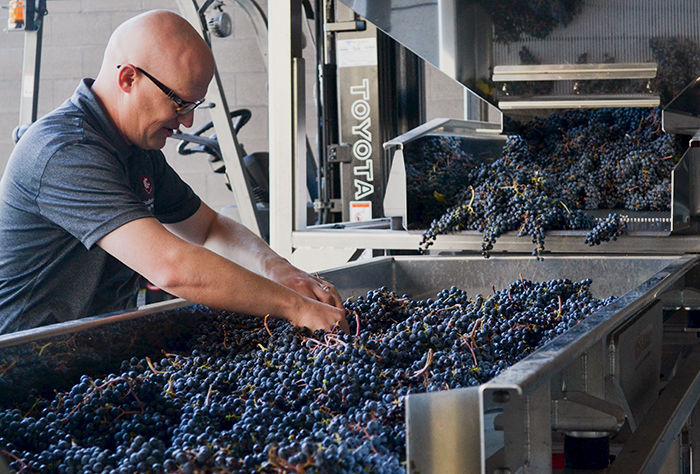State wine research receives $1M
April 5, 2017
Reaching the $1 million mark for the first time, the Washington Wine Commission recommended more funding than ever for the WSU-managed Washington State Grape and Wine Research (WSGWR) program.
Rick Hamman, viticulture manager of Hogue Ranches in Prosser and chairman of the Wine Research Advisory Committee (WRAC), a subcommittee of the Washington Wine Commission, said the research program is receiving almost $1,053,000. This is approximately a 21 percent increase in funding from last year’s allocation of $870,000, according to a 2016 news release.
“It definitely helps,” Hamman said. “We can fund a few more projects and that’s really important.”
Melissa Hansen, Wine Commission research program manager, said funding for the WSGWR program comes from the Wine Commission, the Auction of Washington Wines, the WSU Agricultural Research Center and a portion of the liter tax on all bottles of wine sold in the state.
Hansen said the Auction of Washington Wines, an organization that donates to state wine research and Seattle Children’s Hospital, played a large role in the spike in funding as they had a record auction last August that brought in more than $3 million. She said this is why they could contribute almost $80,000 more than last year to the research program.
Hamman said the research advisory committee was able to approve funding for 18 research projects, including eight new ones.
Hansen said the projects include research on powdery mildew fungicide resistance and crown gall bacteria incidence, a new mite species in Eastern Washington, effects of wine pH on wine microbial ecology, and the sensory characteristics that make Washington wines unique. These forms of research projects typically last two to three years, she said.
In order to get a research project approved for funding, Hamman said researchers have to put together their proposals and submit them to the research advisory committee prior to Dec. 15. At that point, Hamman and the rest of the committee members score and rank the proposals.
Researchers then get a chance to present their proposal to the committee members who will look at the scoring and decide whether to fund the project, Hamman said. He said the scoring is based largely on what research priorities the industry sees as most important.
Hansen said the priorities are developed through an industry-wide survey that is sent out each year. Participants are asked to rate current priorities and add new ones they believe are important enough to include, she said.
“It’s great to be able to really tackle the things you know are the most pressing,” Hansen said.
Jim Harbertson, associate professor of enology, said the funding is important, not only for research, but in support of employees who work behind the scenes to ensure the functionality of the research program.
The funds also help create beneficial experiences for students in the WSU Viticulture and Enology Program, like research opportunities over the summer, Harbertson said.
“It’s amazing all the things you can do once you have money to do it,” he said.





















